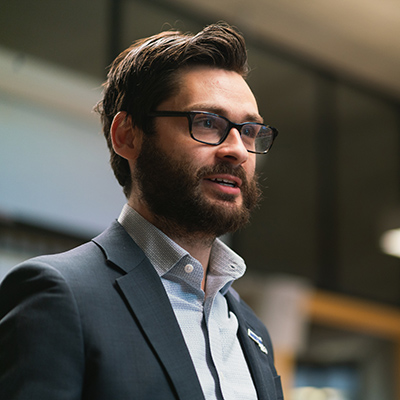
I am quarantined with three roommates, two of them under the age of three. To be clear, they’re my wife and daughters. I love them to the moon and back, but it is tough to be cooped up in a one-story apartment with a restless toddler.
Don’t get me wrong, I’m appreciating the extra time I get to spend with my two-and-a-half-year-old daughter. If there is a silver lining to the novel coronavirus (COVID-19) outbreak, it’s certainly that.
But let’s just say my wife, and even my newborn, are a whole lot easier to be stuck with. Have you ever tried to keep a toddler entertained all day, everyday, with no breaks and nowhere to go, while also trying to work from home? Right now, her attention span is all of two minutes. And instead of minutes ticking by, “I wanna eat,” is now the constant drumbeat to everything I do. (Though in a surprising turn, she switched to, “I wanna cut my hair” for a few days).
Of course, this new reality is hard for her too. She loves her daycare, her teachers and her friends, and she tells us all the time how much she misses them. She also misses her grandparents, cousins, playgrounds and “french fry stores” (restaurants).
These days, the one thing we can still do is our daily walk around the block. (Ok fine, usually twice daily, and sometimes three times daily.) It’s really our saving grace, because we get some exercise, some fresh air, and on a good day, some sunlight. We always come back feeling refreshed and feeling like we can handle the chaos for a little bit longer.
The only issue with our walks is that it’s hard to maintain appropriate physical distancing with our neighbors. I can’t tell you how often I have to grab my kid’s hand and pull her onto someone’s yard or even into the street in order to stay at least six feet away from other people. It’s not that our streets are overcrowded. It’s that our sidewalks, like most sidewalks across the country, are just not big enough. Obviously, they weren’t built with a global pandemic in mind.
Overly narrow sidewalks are especially problematic when you consider that a lot of essential COVID-19 travel is being done by foot and bike, particularly now that people are staying off public transit. Essential workers, including our doctors, nurses, pharmacists, grocery store clerks, transit workers and more, still need to get to the front lines. And people still need to be able to get to these essential places safely when necessary. Much like my daughter and I have experienced on our walks, people taking those essential trips are also having trouble staying an appropriate distance apart.
So far, my daughter and I have been making do with these space challenges. But we should be making more space for recreational walks and bike rides. Not only does exercise, fresh air and sunshine keep us sane during lockdown, they’re also good for our immune systems. Even more importantly, we should be making space for essential travel, because unlike recreational walks, those trips can’t be put on hold.
With car travel down significantly across the country, streets are now all but empty. That means, with minimal disruption of normal traffic, we can start closing off parts of those streets to cars, and opening them up to pedestrians and cyclists for essential trips. On some routes, these logistics will already be in place: cities regularly close certain roads off to cars for events, parades, marathons and other reasons.
Closing streets (or parts of streets) to non-necessary cars on some routes around grocery stores, pharmacies, hospitals and other essential locations can help make travel safer during a time of necessary physical distancing. It will also create safe passages for people to walk and bike, which may also help reduce crowding in parks and on trails, where people have been congregating in an attempt to get outside and get exercise during quarantine.
Other precautions cities should take to help protect essential trips being made by pedestrians or cyclists include:
-
Reducing speed limits to 20 mph or lower in dense urban areas, and making public announcements that every street should be considered a shared street. To the extent possible, speed feedback signs should be added to these roads. Drivers should be advised to yield to pedestrians, runners and cyclists.
-
Reducing the cycle length of traffic signals at key intersections to reduce delay for all road users, including people walking, biking and driving.
-
Automating WALK signals so pedestrians do not have to push buttons.
Cities can implement these policies quickly in order to protect essential workers in the short term. But cities can also consider implementing these policies more permanently, even as we return to some sense of normalcy after the crisis ends. Creating safe passages for people to travel by foot or bike is good for the public health, for the climate, and for building a more modern and efficient transportation network.
P.S. If you’re wondering, my daughter did get that haircut, and is now sporting a solid homemade ‘90s bowl cut.
P.P.S. If you’re like me and quarantined with kids, make sure to check out Environment America’s Greener Together webpage for some great resources and activities.
